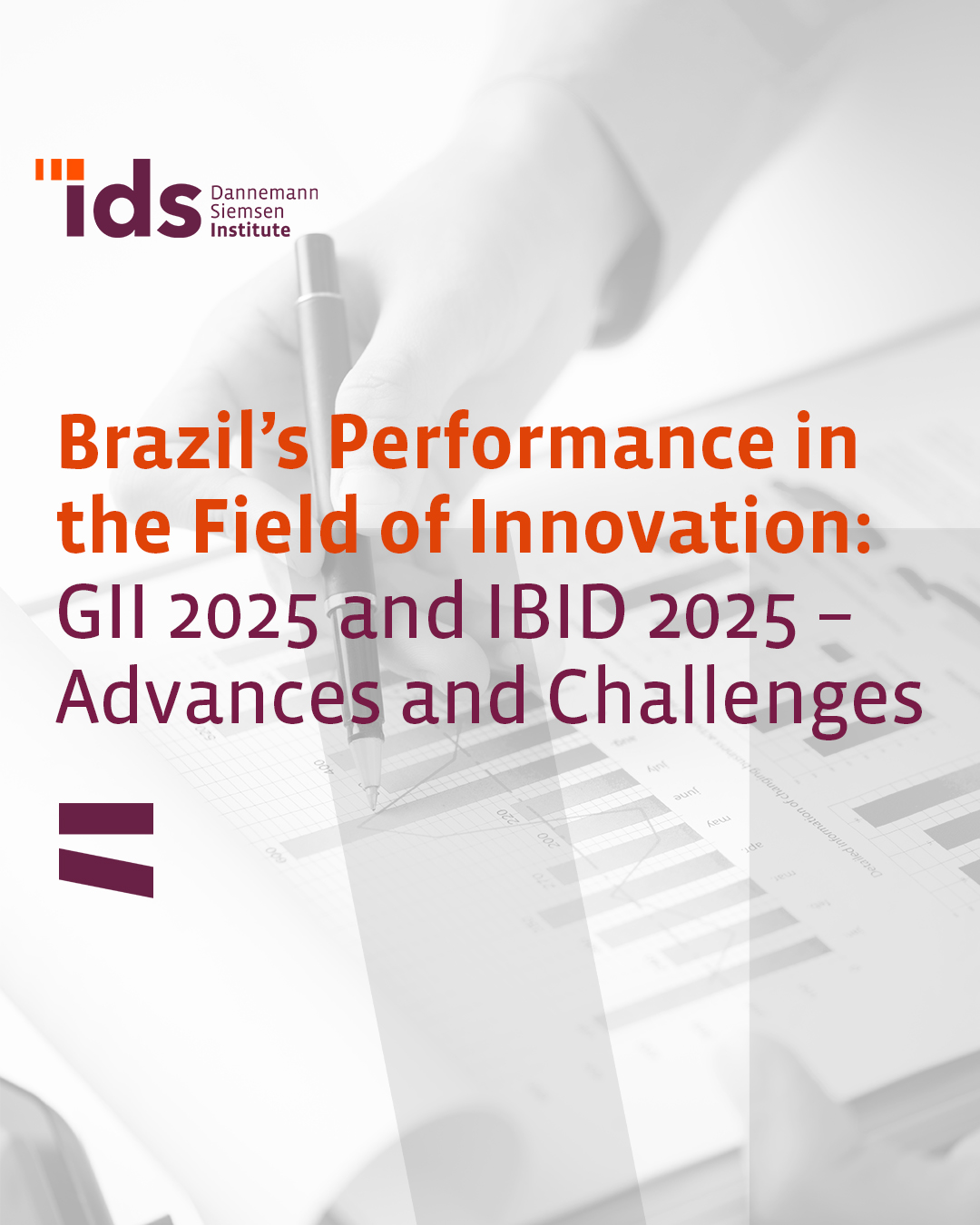23 de setembro de 2025
Share
Brazil’s Performance in the Field of Innovation: GII 2025 and IBID 2025 – Advances and Challenges
In August and September 2025, two landmark reports were released that help to situate Brazil within the innovation landscape, both internationally and domestically. At the global level, the Global Innovation Index (GII), published annually by the World Intellectual Property Organization (WIPO), ranks 139 economies based on 78 indicators organized into seven pillars: institutions, human capital, infrastructure, economy, business sophistication, knowledge and technology, and creative outputs. At the domestic level, the Brazil Innovation and Development Index (IBID), produced by the Brazilian Institute of Industrial Property (BPTO), follows a similar methodological framework to assess science, technology, and innovation performance across Brazilian states and regions.
The GII 2025, under the theme “Innovation at a Crossroads”, highlights recent achievements but also signals signs of stagnation. Although research and development continues to expand, global growth in the sector slowed to 2.9 percent in 2024, the lowest rate in more than a decade, and is projected to decline further in 2025 to 2.3 percent. In contrast, venture capital operations grew by 7.7 percent in 2024, though this outcome was concentrated in a limited number of large-scale transactions in the United States, particularly in artificial intelligence. Nevertheless, the overall number of deals decreased and investment flows became further concentrated in the technology sector and in the U.S. market.
In the global ranking of the most innovative economies, Switzerland ranks first, followed by Sweden, the United States, the Republic of Korea, and Singapore. China entered the top group for the first time, while Latin America is represented by Chile (51st), Brazil (52nd), and Mexico (58th) among the first 60 positions. With regard to the 2024 GII, Brazil fell two places (50th) and was overtaken by Chile, no longer occupying the leading position in Latin America.
Another highlight of the GII is the listing of the 100 leading innovation clusters, defined as regions with a high concentration of research, startups, technology, and venture capital. The 2025 ranking is led by Shenzhen–Hong Kong–Guangzhou (China and Hong Kong), Tokyo–Yokohama (Japan), and San Jose–San Francisco (United States). In Latin America, São Paulo ranks 49th, Mexico City 79th, and Rio de Janeiro is identified as one of the leading emerging clusters among middle-income economies.
The report further notes that Brazil remains among middle-income economies whose innovation performance surpasses expectations for their level of development. Particular emphasis is placed on the relevance of Brazilian scientific publications, the strong cooperation between universities and enterprises, and the vitality of the startup ecosystem, especially in São Paulo.
The IBID 2025, in turn, confirms the strong concentration of innovation capacities in a limited number of states. The national ranking is led by São Paulo, Santa Catarina, Paraná, Rio de Janeiro, and Rio Grande do Sul, with only six federative units performing above the national average. São Paulo retains a prominent position, with results nearly three times the national average. The report also highlights a close correlation between GDP per capita and innovation performance, although states in the Northeast display higher-than-expected efficiency in converting resources into innovative outcomes.
From a regional perspective, the Southeast (0.505, 1st place) and the South (0.421, 2nd place) have the most structured ecosystems, followed by the Midwest (0.254, 3rd place). Northeast (0.179, 4th place) and North (0.157, last place) continue to face greater challenges, although Amazonas was the state that made the greatest progress between 2024 and 2025, rising from 20th to 17th place and taking the lead within the northern region.
With respect to the seven pillars, also assessed by the GII, the IBID confirms São Paulo’s leadership across all of them, with particular strength in knowledge and technology and in creative outputs. Santa Catarina and Paraná maintain consistent trajectories, while Rio de Janeiro and Minas Gerais stand out in innovation outcomes despite weaknesses in certain dimensions.
Taken together, the two reports reveal a common dynamic. The GII underscores the global concentration of innovation in specific hubs and sectors, while the IBID demonstrates how this same logic is reproduced within Brazil, where centers of excellence coexist with regions of more limited performance.
The GII 2025 and the IBID 2025 can be accessed through the following links: Global Innovation Index 2025 and IBID 2025.
Note: For quick release, this English version is provided by automated translation without human review.
